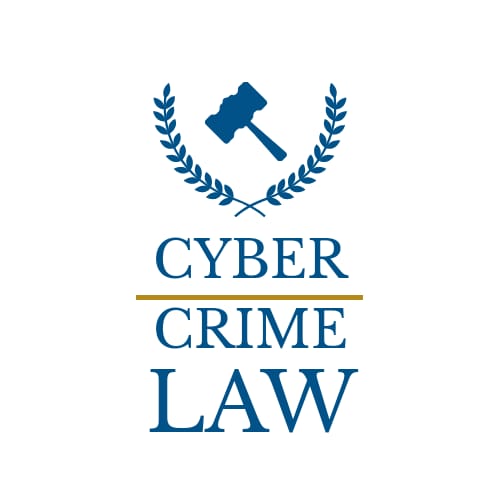
All about Cyber Appellate Tribunal
By-Vaishnavi Venkatesan
Tribunals and quasi-judicial bodies an essential feature of the Indian judicial system, as they provide for easier and less formal methods for dispute resolution, especially disputes which relate to technical areas and often require technical knowledge and familiarity with specialised factual scenarios. Further, quasi-judicial bodies do not have the same procedural restrictions as proper courts, which makes the adjudication of disputes easier.
The Information Technology Act of India, which regulates several important aspects of electronic information, including the regulation of private electronic transactions as well as detailing civil and criminal offences relating to computers and electronic information, contemplates a specialised dispute resolution mechanism for disputes relating to the offences detailed under the Act. The Act provides for the establishment of quasi-judicial bodies, namely adjudicating officers under S.46, to hear disputes arising out of Chapter IX of the Act, namely, offences of a civil nature under S.43, 43A, 44 and 45 of the Act, as well as criminal offences described under Chapter XI of the Act.
Establishment of Cyber Appellate Tribunal:
Cyber Appellate Tribunal was established under the Information Technology Act, 2000. The first Cyber Appellate Tribunal in India was formed by the Central Government in accordance with the provisions described under Section 48(1) of the Information Technology Act, 2000. The Cyber Appellate Tribunal is not guided or governed by the Code of Civil Laws but is guided by the principle of Natural Justice. It has the same power as a Civil Court. The Cyber Appellate Tribunal has powers to regulate its own procedure including the place at which it has its sittings. Every proceeding before the Cyber Appellate Tribunal shall be deemed to be a judicial proceeding within the meaning of sections 193 and 228 and of the Indian Penal Code.
Procedures and Powers of the Cyber Appellate Tribunal (CAT)
The CAT is not bound by the procedure laid down by the Code of Civil Procedure, 1908 but is guided by the principles of natural justice and, subject to the other provisions of this Act and of any rules, the CAT has powers to regulate its own procedure including the place at which it shall have its sitting. It has for the purposes of discharging its functions under this Act, the same powers as are vested in a civil court under the CPC, 1908, while trying a suit, in respect of the following matters, namely:
-Summoning and enforcing the attendance of any person and examining him on oath.
-Requiring the discovery and production of documents or other electronic records.
-Receiving evidence on affidavits.
-Issuing commissions for the examination of witnesses of documents.
-Reviewing its decisions.
-Dismissing an application for default or deciding it ex parte.
-Any other matter which may be prescribed
Broadly, the powers of CAT can be Classified as: Powers of superintendence and direction, Power to constitute benches and Power to transfer cases.
Appeals: Under section 57 of the IT Act 2000 lies right to appeal to the Cyber Appellant Tribunal if any person is aggrieved by an order made by Controller or an adjudicating officer. The right to appeal is a creature of a statute and it is for the legislature to decide whether the right of appeal should be given unconditional to an aggrieved party or it should be conditionally given.
Within the scheme of the IT Act under section 62, the Cyber Appellate Tribunal is the final fact-finding authority. The Act provides a second forum of appeal in the form of the High Court to any person aggrieved by any decision or order of the Cyber Appellate Tribunal. An appeal is to be filed within 60 days from the date of communication of the decision.
Recovery of Penalty: A penalty imposed under IT Act, if it is paid, shall be recovered as an arrear or land revenue and the license or the Digital Signature Certificate, as the case may be, shall be suspended till the penalty is paid.
For the effective functioning of any law, such law must be just, fair and reasonable and at the same time there must be a proper forum to regulate it. To give effect to the IT Law, the parliament has established the most important authorities under the same Act for smooth functioning. In the current scenario, where India is gearing up to be a full-fledged ‘digital economy’ and pressing for digitalization of transactions in this rapidly changing scenario, such provisions are vital for effective implementation of legal principles.
The efficacy of the Cyber Appellant Tribunal can be improved by creating necessary awareness in the public & the authorities and with efforts to deploy adequate manpower. It is important to enhance technological ability to deal with any situation that will come across.
Comprehensively explained madam
This article emphasises on the establishment, powers and procedures of Cyber Appellate Tribunal, and also deals with how to recover penalty. it is a well researched and interesting article.
A very well instructive article detailing the Cyber Appellate Tribunal’s establishment, functions and jurisdiction.
It’s a nice article and we’ll explained.This was setup in October 2006.It was specialised forum for redress cyber fraud
The article very elaborately explains the establishment, functions and powers of the Cyber Appellate Tribunal in a simplistic manner. It is indeed useful for a layman, in understanding the complex provisions of law.
Explanation of the jurisdiction of tribunal related to cybercrime is important to know,it’s an informative article telling about powers functions of the tribunal which has a jurisdiction to entertain cases of cyber crime ,well researched article